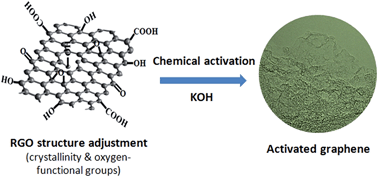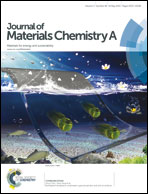Controllable synthesis of activated graphene and its application in supercapacitors
Abstract
Activated graphene has been considered as an ideal electrode material for supercapacitors. In order to reveal the relationship between activated graphene and its precursor and controllably synthesize activated graphene, the structural parameters of the precursor (reduced graphene oxide, RGO) such as crystallinity and attached oxygen-functional groups were controllably adjusted during the synthesis of activated graphene and the effects of the precursor structure on the microstructure of activated graphene were investigated. The activation results reveal that the structure of RGO obviously affects the porous structure of activated graphene. Specifically, the crystallinity and oxygen-functional groups play an important role in the porosity development of activated graphene. By combining the simplified Brodie method and the subsequent post-oxidation process, porous activated graphene with a specific surface area of as high as 2406 m2 g−1 and high pore volume has been successfully prepared. The as-prepared activated graphene exhibits good capacitive characteristics and delivers high energy density (55.7 W h kg−1) when measured in a two-electrode cell with the EMIMBF4 ionic liquid as the electrolyte. The results demonstrate that the obtained activated graphene can be considered as a candidate for advanced electrode materials for supercapacitors.


 Please wait while we load your content...
Please wait while we load your content...